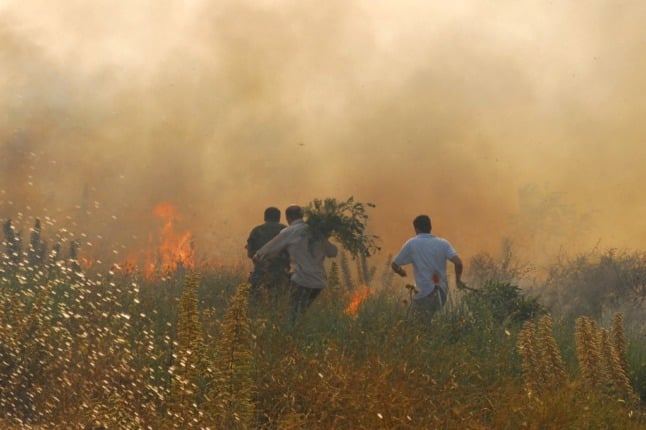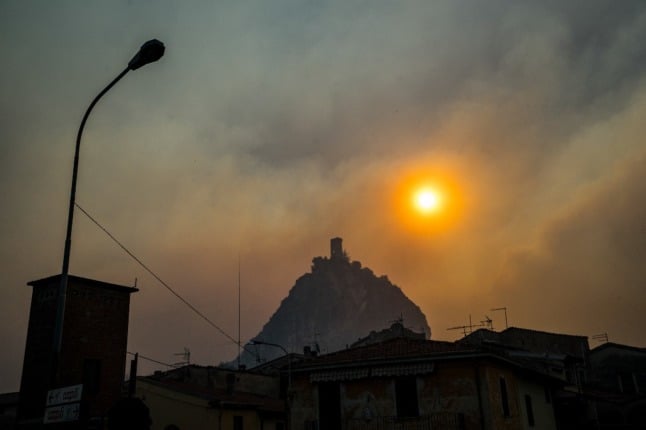The blistering temperature was logged on Wednesday afternoon near Syracuse by the Sicily region’s Agrometeorological Information System (SIAS).
“At 13:14:15 local time, 48.8°C was reached at the SIAS station in Syracuse C. da Monasteri, the highest temperature recorded by the entire SIAS network since its installation in 2002,” SIAS stated in a Facebook post on Wednesday afternoon.
READ ALSO: ‘Lucifer’ heatwave fuels Italy’s wildfires with temperatures up to 47C
This appears to be a new record high for Europe, as well as for Sicily and Italy.
A spokesman for the national meteorological service told AFP on Wednesday afternoon that the reading still had to be validated before it could be confirmed as a new European record.
There is some dispute about the hottest-ever temperature previously recorded in Europe, with Sicily previously setting an “unofficial” record high of 48.5 degrees in 1999.
The World Meterological Organisation gives the official record as 48.0 degrees (118.4°F) in Athens in 1977.
However, 48.8 degrees would break both of these previous temperature records, if confirmed by the national weather service.
“If the data is validated after the appropriate analysis, it could become the highest value recorded on the European continent, beating the previous record of 48°C measured in Athens on July 10th 1977, even surpassing the record of 48.5°C set by an unofficial station in Catenanuova in August 1999,” meteorologist Manuel Mazzoleni from weather site 3bmeteo.com told news agency Ansa on Wednesday afternoon.

The record high reading came amid a blistering heatwave sweeping Italy this week, worsening wildfires in the south of the country, notably Sicily and Calabria.
Sicily in particular, but also the whole of central and southern Italy and part of northern Italy, is affected by a current of hot air from the Sahara that has caused temperatures to soar to unprecedented levels.
The anticyclone was forecast to send the mercury rising to 39-42 degrees midweek elsewhere in southern Italy before sweeping northwards, with weekend temperatures of up to 40 degrees in the central regions of Tuscany and Lazio, which includes Rome.
READ ALSO: Six shocking statistics about the climate crisis in Italy
Italy’s Department for Civil Protection sounded the alarm over the heightened risk of serious fires due to the weather conditions this week.
The island of Sicily and the region of Calabria in particular have already been battling fires throughout the summer – most caused by arson and fuelled by heat.
Thousands of blazes have been recorded across the peninsula in recent weeks, with one in the west of the island of Sardinia ravaging almost 20,000 hectares during the worst fires seen in decades.
Although extreme weather events have always existed and Italy is no stranger to intense heat, experts say the climate crisis is making heatwaves more frequent and more dangerous.
This year’s fire season has been significantly more destructive than the previous average, EU data shows.



 Please whitelist us to continue reading.
Please whitelist us to continue reading.
Member comments